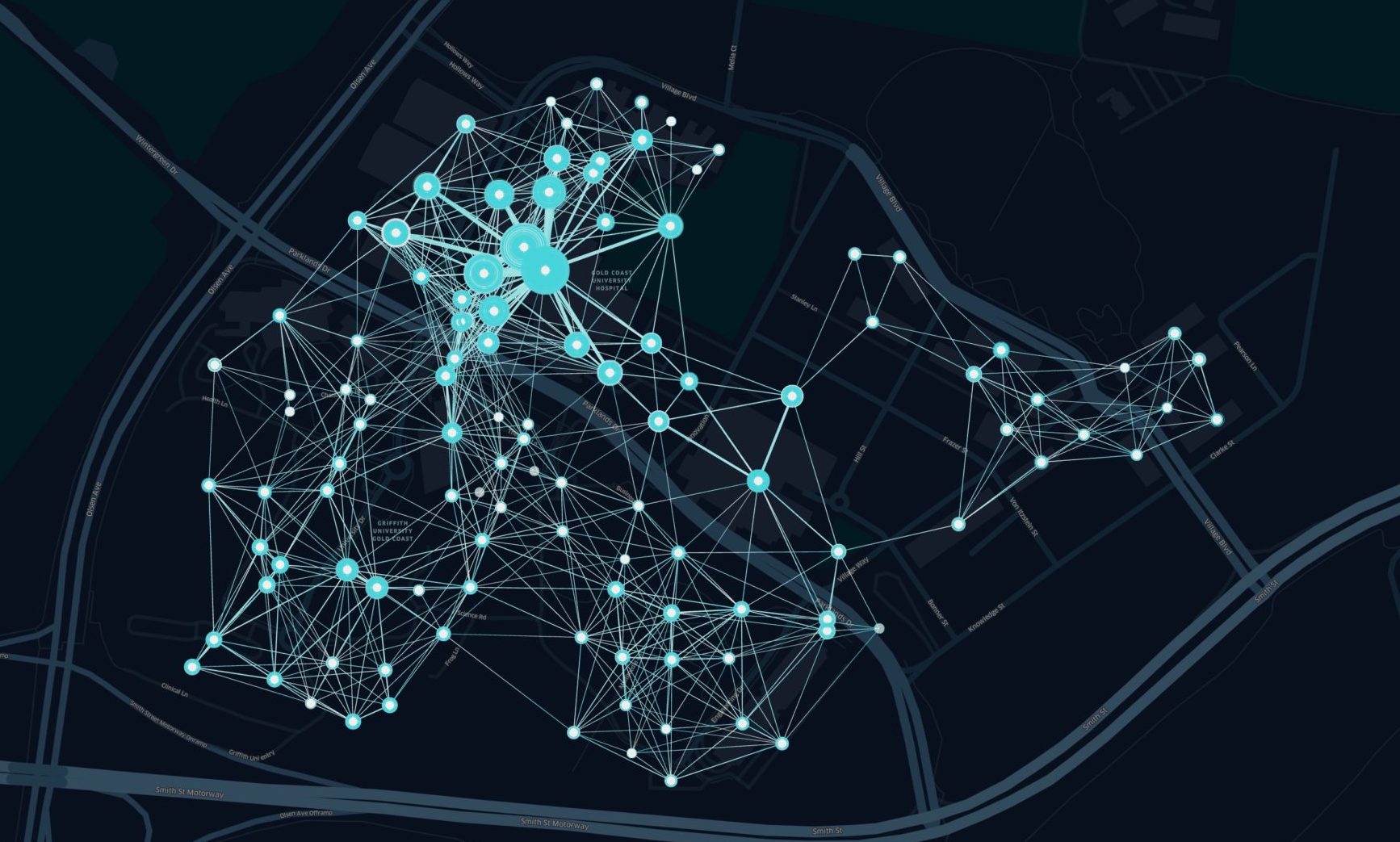Place Intelligence collaborated with the research team at Hassell to produce a framework and comparative measures for understanding the rhythms of activity of knowledge and health precincts and the impact of landscape orientated design.

Background
The knowledge economy has propelled the development of innovation precincts: multi-billion-dollar districts that aim to foster, attract and retain knowledge workers and investment. Knowledge production is now considered a critical intangible economic asset.
Despite considerable public and private sector investment in the development of knowledge precincts over the last decade, it remains an understudied area of research. There is a need to develop key performance frameworks to measure place use and utilisation over time for the adequate benchmarking of innovation districts, as well as the classification of distinctive precinct typologies.
A New(er) Typology: Comparing health and knowledge precincts
Academic research has largely focused on innovation precincts in the context of local industrial specialisations, technology parks, creative precincts and knowledge hubs that address a common set of needs, or sectors.
University campuses and hospital precincts are cited, often separately, as major activity nodes that fuel economic growth, with two notable recent examples of a combined health and knowledge precinct typology the Fiona Stanley Hospital and Murdoch University precinct in Perth; and the Gold Coast Hospital and Griffith University precinct on Queensland’s Gold Coast.
The two precincts bear a similar asset ecology in the last decade, both have a developed tertiary hospital adjacent to the established university campus, and each precinct has a private hospital and privately-operated commercial and retail hubs under development.
The closely related development timelines of the Fiona Stanley Hospital in Perth (2013) and the Gold Coast University Hospital (2014) provides an excellent opportunity for retrospective comparative analysis to measure the progress of capital intensive development and its impact on the patterns of activity and movement in each urban centre.
Big Data, Big Possibilities: An opportunity for research
Multidisciplinary architecture, design and urban planning firm Hassell had been involved in the design and urban planning of both the Fiona Stanley Hospital and Gold Coast Hospital precinct. Hassell’s research team wanted to conduct a comparative analysis of these two precincts to develop indicators that they could apply to other precinct-scale projects.
“The similarities between the precincts in size, timing and design aspiration present a unique opportunity to compare the progress of development and patterns of activity, and to evaluate what the designs have delivered for their clients and communities.”
Michaela Sheahan, Senior Researcher, Hassell
Place Intelligence: A digital place-use audit
Place Intelligence built a series of place-driven metrics to support the evaluation of planning, urban and landscape design responses in the context of three research themes: people, place and prosperity.
Our team used human movement data to understand place-use patterns and trends. We conducted four (4) studies on activity, dwell times, connections and arrivals to establish a comprehensive place use and utilisation metric set for health-university precincts. Place Intelligence proprietary models use utilisations metrics that incorporate a number of variables.
- Day-time and night-time demand profiles
- Visitor segmentation
- Precinct profiles
- Hospital v campus
- Dwell times
- Movement heat map
- Precinct connectivity
- Visitor points of origin (magnetism studies)
- Emergency room catchments and wait times
“[We] uncovered many similarities in how people use and move around the precincts, most notably in predictable peak times of travel to and from the sites (early morning, late afternoon) and mid-morning to mid-afternoon peaks in activity. But there are interesting differences in development progress and movement that highlight local factors such as transport access, institutional focus and economic conditions.”
People, Places and Prosperity report, 2021
Impact
- Sites follow a typical demand profile, which match commercial trading hours. University campuses typically index lower than their hospital counterparts, even if the campus has a larger built form footprint
- Building demand profiles were indexed against the larger precinct, revealing that more than 60% of total activity is found with buildings in both study areas
- Detailed analysis of the public realm shows that there is a direct correlation between high-quality designed landscape spaces and hospital staff, particularly at lunch times
- Analysis of audience origins for emergency departments reveals that for both hospitals, a major component of their catchment comes from neighbouring metropolitan zones assigned to other hospitals as well as from external zones beyond the metro area
- Hospital buildings have the greatest number of visitors of any one building as compared to their university asset counterparts
- Time-based duration models confirmed a post-lockdown increase in average dwell times in 2021
- Place Intelligence movement models revealed how people move between locations within the hospital precincts and between hospitals and universities.
“There is a considerable body of research that suggests access to green space has a direct benefit on increased work productivity and supports faster and more effective recovery from illness.
In this study we explore the use of advanced mobility analytics to understand the relationship between high-quality architecture and landscape design that prioritises access to the outdoors to assess it’s effectiveness with different audience groups, and inform future design and planning decisions.”
Bonnie Shaw, Chief Impact Officer, Place Intelligence
“University and hospital campuses are, ideally, planned with safe routes allowing people to easily move through and around them at all hours. And it’s incredibly helpful to understand if people are following those patterns or creating new ones. It’s so important to have that insight, that proof.”
ângus Bruce, Principal, Hassell
Download the People, Place and Prosperity report here
Stay up to date with
Place Intelligence.
Sign up to our newsletter for updates on our latest research, events and community.
Melbourne
Level 1/Suite 2, 178 Collins St, Melbourne, VIC, 3000
San Francisco
Level 7, 650 California St, San Francisco, CA, 94108
London
Level 1, 6-14 Underwood St, London, N1 7JQ

